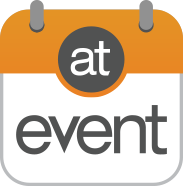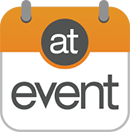For salespeople, events offer one of the best opportunities to connect with prospects face-to-face and further the sales conversation. Yet, many of us go into events underprepared, hoping to make headway with key accounts simply by virtue of being in the same room.
Sure, some great deals have been made over drinks at the conference center, but why leave things to chance? With a little planning, you can maximize your engagements–without sacrificing any of the fun. In this first of three articles, we’ll look at five things you can do before you go to help you get the most out of your next event.

Your event booth is a great mechanism for growing mindshare among new prospects. But the most effective use of salesperson time at events is engaging with previously known prospects. Here’s where strong coordination between your marketing and sales teams comes into play. Four to six weeks before your event, marketing should run an email and re-targeting display ad campaign that drives prospects to set up an appointment with a member of your sales team at the event. The goal here is to maximize engagement with people who are already aware of your solution.


This is not the time to go in cold and hope that interested parties will find you. We all know how chaotic and busy events are; relying on attendees’ intentions can mean important interactions get missed. Your pre-event inbound marketing campaign should have generated some appointments, but savvy salespeople won’t stop there. Check attendee and sponsor lists to find out who will be there and reach out directly to important prospects who have not yet answered the call for appointments.

Your account and prospect history, that is. Once you know who will be there, you’ll want to figure out which accounts and prospects matter the most—those who are on your target list or match your personas. Ask yourself:
- What has been the activity history with this account or prospect over the last 90-120 days? The prospect’s name might be new to you, but if 15 other people from the account have been researching your offerings in the last six months, they are likely someone to pay attention to.
- What are they doing? Are they consuming certain content? Are they raising their hand and asking for a demo? Are they looking at technical requirements? The answers to these questions should tell you how to lead the conversation with them.

While you’re spending your time with the top contenders, you can also make sure that booth staff are making the most of every interaction with a sales playbook customized for the event. What should booth staff do if the decision maker from the prospect account shows up? What about when a junior resource shows up? Taking the time to think through the most likely scenarios will help you set up your tools (see #5 below) and train your staff to solicit and capture the kind of details that allow you—and your Marketing Automation (MA) system—to identify where the prospect is in her journey and route her accordingly.


Booth staff often gain great insight into prospects’ concerns and readiness to buy—but unless they have a way to capture that information, all event leads look the same once they get to your desk. Make sure you:
- Have a mechanism to capture more than just badge scans
- Are set up to collect the information you need mos
- Have a process to get your lead capture data into your MA or CRM tool in a timely manner for follow-up
If you’re using a lead management event app like atEvent, you can pre-populate fields such as topics of interest, requested follow-up actions, and more—so you can automatically segment and score event leads for more timely follow-up.
You wouldn’t go into a sales call without doing your homework, and events should be no different. By taking the time to think and act strategically before the event, you not only set the stage for a more fruitful at-event experience, but lay the groundwork to receive higher-quality leads that you can follow up on faster once the event is over.
Stay tuned for the next installment in this series, in which we’ll look out how to take advantage of the latest technology to optimize sales engagements at events!








